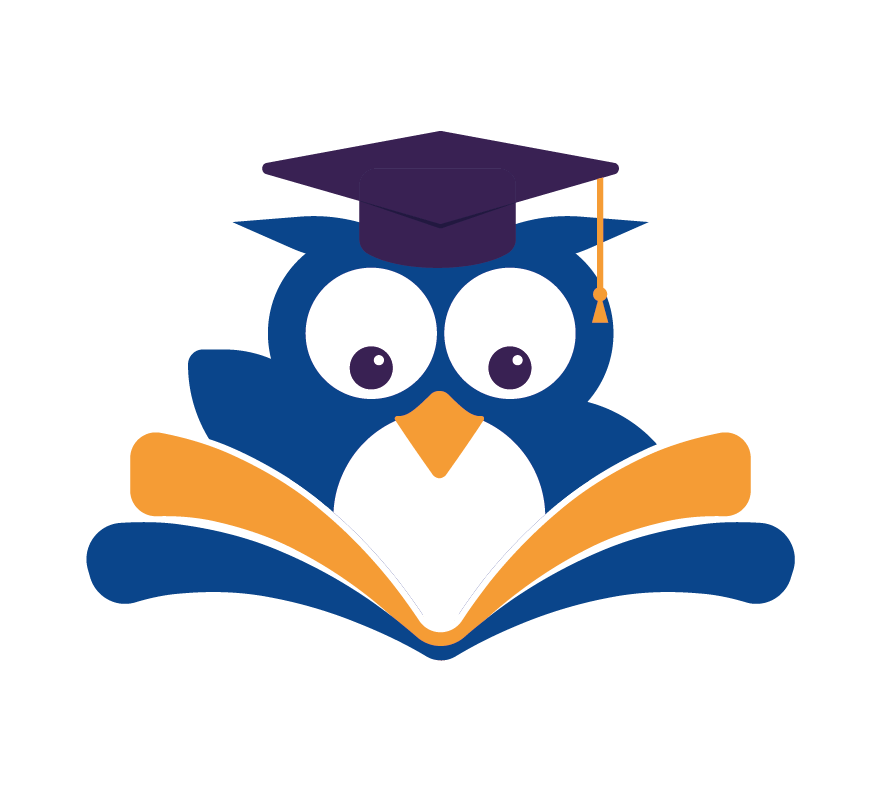Are you tired of studying feeling like a chore? We have a solution that can change that! Imagine being able to understand complex information easily and keep it in your memory for a long time. This isn’t just a dream; it’s real with layered reading.
Layered reading is a method that uses multiple layers of reading to improve understanding and memory. By using this technique, you can make studying fun and effective. We’ll show you how to use this powerful method to your advantage.
Key Takeaways
- Understand the concept of layered reading and its benefits.
- Learn how to apply layered reading to enhance comprehension.
- Discover how layered reading can improve retention.
- Transform your study sessions into enjoyable experiences.
- Gain practical tips on implementing layered reading.
What Is Layered Reading?
Layered reading is a new way to connect with texts. It’s an effective reading comprehension strategy that lets you explore a text in depth. You make multiple passes through it to uncover its secrets.
The Definition and Core Concept
At its heart, layered reading uses active reading techniques to better understand and remember information. It’s a way to dive deep into the material. This ensures you get a deeper understanding of what you’re reading.
Historical Development of Reading Layers
The idea of layered reading has grown over time. It combines different strategies and techniques from various educational and literary fields. Educational experts say, “Layered reading is not new, but its use has grown as we see its benefits in improving reading skills.”
“The art of reading is not just about recognizing words, but about understanding the layers of meaning behind them.”
This growth has changed how we read, making it more exciting and interactive.
The Science Behind Layered Reading
Layered reading is a complex process that boosts our understanding and memory. It involves using critical reading skills to read on different levels. This makes us better at remembering and using what we read.
Cognitive Processes Involved
Reading on layers requires our brains to work hard. It uses perception, attention, and memory. We process information from simple to complex levels.
This way, we get better at remembering and using what we read. It helps us spot important ideas and connect them.
Research Supporting Multi-Dimensional Reading Approaches
Studies prove that layered reading improves how well we understand and remember. When we read on multiple levels, we grasp the material better.
Many studies back up the benefits of layered reading. They show it works well in school and at work.
Key Benefits of Layered Reading
Layered reading offers many benefits, affecting how we read and learn. It makes reading more effective by improving how we process and remember information.
Enhanced Comprehension and Retention
Layered reading boosts comprehension by engaging with material on different levels. This multi-layered approach strengthens your understanding. It helps you grasp the big picture before diving into the details.
Improved Critical Reading Skills
Layered reading sharpens your critical reading skills. It’s not just about understanding the text but also analyzing and judging it. As you practice, you’ll get better at spotting key points, recognizing biases, and making smart judgments.
Time Efficiency in the Long Run
At first, layered reading might seem slow. But it actually saves time in the long run. You learn to quickly spot important info and avoid unnecessary details. This is super helpful with big texts or complex materials.
| Benefits | Description | Outcome |
|---|---|---|
| Enhanced Comprehension | Multi-level engagement with the material | Better understanding and retention |
| Improved Critical Skills | Analysis and evaluation of information | Informed judgments and deeper insights |
| Time Efficiency | Focused reading and prioritization | Reduced reading time and increased productivity |
The Three Fundamental Layers of Reading
Reading is more than just looking at words. It’s about exploring different levels of understanding. Think of it like peeling an onion, where each layer uncovers something new. Let’s dive into these layers to improve your reading.
Layer 1: Skimming and Previewing
The first layer is about skimming and previewing. It’s like looking at a map before a trip. You get a sense of the layout and where to go.
Identifying Key Information Points
When skimming, look at headings, subheadings, and bullet points. This helps you find the main points quickly. It keeps you from getting lost in too much detail.
Setting Reading Goals
Before you start, set reading goals. Are you searching for something specific or trying to get the big picture? Goals help guide your reading.
Layer 2: Active Reading and Annotation
The second layer is active reading and annotation. This means really engaging with the text by highlighting, underlining, and taking notes.
Effective Highlighting Techniques
Choose effective highlighting techniques to mark key parts. Be careful not to overdo it with colors.
Margin Notes and Symbols
Using margin notes and symbols turns reading into a conversation. It makes you more involved and helps you remember better.
Layer 3: Deep Analysis and Reflection
The third layer is deep analysis and reflection. Here, you really think about what you’re reading. You make connections and put ideas together.
Connecting Ideas Across Texts
As you read, connect ideas from different texts. This helps you see patterns and relationships that might not be clear on their own.
Synthesizing Information
Lastly, synthesize the information you’ve read. This means combining new knowledge with what you already know. It gives you a deeper understanding.
Getting Started with Layered Reading: Essential Tools
To fully enjoy layered reading, you need the right tools. This multi-dimensional reading approach is enhanced by the right tools. They make a big difference.
Physical Tools for Effective Annotation
Annotation is crucial in layered reading. You’ll highlight important parts, write notes, and use symbols. You’ll need:
- High-quality pens and pencils that won’t bleed through the page
- Highlighters in various colors to categorize information
- Sticky notes or tabs to mark important pages or sections
Many say,
“the art of annotation is a skill that enhances the reading experience”. Using these tools well lets you dive deeper into what you’re reading.
Digital Tools and Applications for Interactive Reading
In today’s world, digital tools can boost your layered reading. Some top picks are:
- Reading apps like Evernote or OneNote for annotating digital texts
- Browser extensions for organizing and annotating online articles
- Digital highlighters and note-taking tools that work on all your devices
As an expert notes,
“The right digital tool can turn your reading into an interactive experience. It makes it easier to connect with the material on different levels.”
With these digital tools, you can elevate your layered reading.
Step-by-Step Guide to Implementing Layered Reading Techniques
Are you ready to unlock the full potential of layered reading and transform your reading experience? Implementing layered reading techniques requires a strategic approach, and we’re here to guide you through it.
Preparation Phase
Before diving into layered reading, it’s essential to prepare yourself. Start by choosing a comfortable and distraction-free reading environment. “A good reading environment is crucial for effective learning,” as noted by reading experts. Familiarize yourself with the material, and set clear goals for what you want to achieve through your reading.
First Pass: Effective Skimming Techniques
Your first pass involves skimming through the text to get a general overview. Focus on headings, subheadings, and bullet points. Ask yourself, “What is the main idea of this text?” This step helps you understand the structure and context, making it easier to dive deeper in subsequent readings.

Second Pass: Active Engagement Strategies
During your second pass, engage actively with the material. Take notes, highlight important points, and ask questions like “What is the author trying to say?” or “How does this relate to my existing knowledge?” This active engagement helps solidify your understanding and promotes retention.
Third Pass: Analytical Reading Methods
In your third pass, analyze the text critically. Look for underlying themes, arguments, or biases. As Francis Bacon once said, “Reading maketh a full man.” Reflect on how the information can be applied or how it challenges your current perspectives.
By following these steps, you’ll be well on your way to mastering layered reading techniques and enhancing your reading experience.
Applying Layered Reading to Different Types of Texts
Layered reading is a skill that works well with many types of texts. It helps students, professionals, and readers understand and remember what they read better. By adjusting how you read to the type of text, you can get more out of it.
Academic and Scientific Literature
Layered reading is key for academic and scientific texts. Start by looking at headings and abstracts to get the big picture. Then, read closely, marking important points and questions.
After that, think about what it all means and how it fits with what you already know.
Fiction and Literary Works
Layered reading makes fiction and literary works more meaningful. First, glance over the text, noting titles and chapter headings. As you read, think about the story and why characters do what they do.
After finishing, think about the themes and symbols. How do they add to the story’s impact?
Professional and Business Documents
For work-related texts, layered reading helps you find what’s important fast. Look over reports to spot key data and advice. Then, read it all carefully to grasp the details and what they mean.
Lastly, think about how this info can help you make decisions or take action.
Using layered reading with different texts can make you a better reader. It helps you understand and use what you read in many situations.
Advanced Layered Reading Strategies for Deep Comprehension
To improve your layered reading, you need to learn advanced strategies. These help you understand complex information better. Start with the basics, then move on to more advanced techniques.
SQ3R Method Integration
The SQ3R method is a great way to enhance your reading. It stands for Survey, Question, Read, Recite, and Review. By using this method, you can better understand and remember what you read.
First, survey the text to get an overview. Then, ask questions about what you’ve surveyed. As you read, look for answers to your questions. Next, summarize the main ideas in your own words. Lastly, review what you’ve read to solidify your understanding.
Cornell Note-Taking System
The Cornell Note-Taking System is another useful tool for layered reading. It involves dividing your paper into two columns. The narrower column is for keywords and questions, and the wider column is for notes.
As you read, jot down key phrases and questions in the narrower column. Summarize the main ideas in the wider column. This method helps you engage more with the material and review it more efficiently.
Mind Mapping Between Layers
Mind mapping is a visual technique that connects different layers of reading. It helps you organize information and see relationships between ideas. Start with the central idea, then add related concepts and subtopics.
Use colors, symbols, and images to make your map more engaging. This way, you can remember the information better.
| Technique | Description | Benefits |
|---|---|---|
| SQ3R Method | Survey, Question, Read, Recite, Review | Improved comprehension and retention |
| Cornell Note-Taking | Divide paper into two columns for notes and keywords | Enhanced engagement and efficient review |
| Mind Mapping | Visual organization of information | Deeper understanding and better retention |
Mastering Close Reading Exercises Through Layered Approaches
Close reading can be improved by using layered reading techniques. These methods help readers find deeper meanings and connections in texts. We will look at how to master close reading exercises through layered approaches, focusing on textual analysis and developing interpretive skills.

Textual Analysis Techniques
Textual analysis is key in close reading. It involves closely examining the text to understand its structure, language, and meaning. To analyze a text well, start by finding key themes, motifs, and literary devices.
Annotation is a powerful tool in this process. It lets readers engage with the text by highlighting important parts, noting observations, and recording questions.
As you dive deeper, think about the author’s purpose and how it ties to the overall message. Ask yourself, “What is the author trying to say?” or “How does the text make me feel?” This engagement leads to a deeper understanding.
Developing Interpretive Skills
Interpretation is central to close reading. It’s about making sense of the text by linking different elements. To improve your interpretive skills, practice combining insights from various layers of reading.
Discussion and reflection are also crucial. Talking about the text with others or reflecting on your own reading can offer new insights. Seeing different perspectives can also enhance your understanding.
Layered Reading in Educational and Professional Settings
Layered reading is changing how we tackle complex texts in schools and workplaces. It’s not just for students; it’s also key in many professional fields. Here, deep reading strategies are essential.
For Students: Maximizing Study Efficiency
Students can really benefit from layered reading. It makes studying more efficient. They can skim headings, annotate texts, and dive deep into content.
For example, when studying for exams, students can use the first layer to spot important topics. The second layer helps them grasp concepts. And the third layer is for analyzing and reflecting on the material.
For Educators: Teaching Active Reading Techniques
Educators are crucial in teaching students to read actively through layered reading. They can add this method to their teaching. This helps students think critically and engage more with what they read.
For instance, educators can lead students through a layered reading exercise. They start with skimming, then active annotation, and end with a deep analysis discussion.
For Professionals: Application in Workplace Settings
In the workplace, layered reading helps understand and analyze complex documents and reports. It lets professionals quickly find key information, analyze data, and make smart decisions.
As “The more you read, the more you know”, using layered reading boosts workplace productivity.
Overcoming Common Challenges in Layered Reading Practice
Layered reading can change the game, but it comes with its own set of challenges! As you start this multi-dimensional reading approach, you might hit some bumps. Let’s face these obstacles together!
Time Management Issues
Managing your time between layers is a big challenge. To beat this, set aside specific times for each layer. For example, spend 30 minutes skimming, then 45 minutes on active reading.
Maintaining Focus Between Layers
Keeping your focus is key. Use interactive reading practices like annotating and summarizing to stay sharp. Switching between layers might be tough at first, but you’ll get the hang of it!
Adapting to Different Learning Styles
Everyone learns in their own way. Try out different methods to find what works for you. Some might like visual aids, while others prefer listening.
| Challenge | Solution |
|---|---|
| Time Management | Allocate specific times for each layer |
| Maintaining Focus | Use interactive reading practices like annotating |
| Different Learning Styles | Experiment with various techniques |
Conclusion: Integrating Layered Reading into Your Daily Routine
To start using layered reading every day, apply what you’ve learned. This will make studying better and more fun. You’ll understand and remember more.
When you add layered reading to your daily life, you’ll get better at understanding hard texts. You’ll keep this knowledge longer. Layered reading helps you see texts in many ways. This makes you understand deeper.
By making layered reading a regular part of your life, you’ll feel more confident with tough texts. This is true for students, professionals, or anyone who loves to learn. So, begin today and see how layered reading can change your learning experience!

